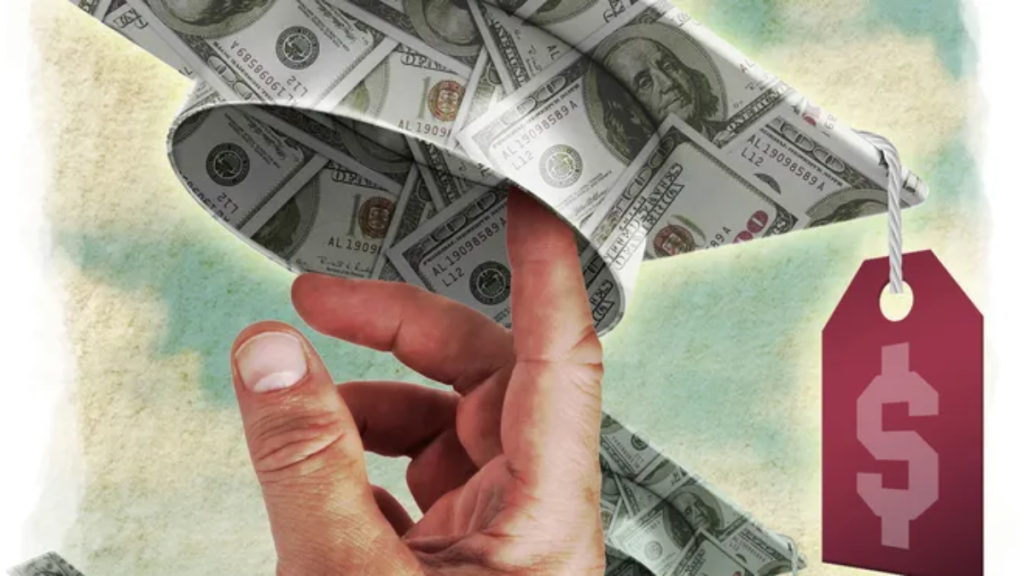As more Americans retire with student loan debt, understanding how those loans can affect Social Security benefits has become increasingly important.
Whether you’re receiving Social Security Disability Insurance (SSDI), Supplemental Security Income (SSI), or traditional retirement benefits, student loans — especially federal ones — can have an impact on your financial well-being during retirement.
The Growing Link Between Student Loans and Social Security
Student debt is no longer just a problem for young adults. According to the Consumer Financial Protection Bureau, the number of older Americans carrying student loans has quadrupled over the past two decades.
Many are parents or grandparents who co-signed or borrowed on behalf of others, while others still carry their own educational debt into retirement.
In most cases, your student loan balance doesn’t directly lower your Social Security benefit calculation. However, federal student loan default can lead to garnishment of your monthly benefit checks, making it essential to understand how to protect your income.
Social Security Retirement Benefits and Student Loans
If you’re receiving Social Security retirement benefits and you’re not in default on a federal student loan, the amount you receive will not be affected by your student debt. Your monthly benefit is based on your lifetime earnings history and has no direct connection to your outstanding student loans, as long as you’re in good standing.
However, problems arise when borrowers default on their federal loans. If that happens, the federal government is allowed to garnish a portion of your monthly Social Security payments to collect the unpaid debt.
What Happens If You Default?
When federal student loans go into default — typically after 270 days of nonpayment — the U.S. Department of Education can request that the Treasury Department garnish your Social Security benefits. This applies mainly to Social Security Disability Insurance (SSDI) and retirement benefits, not Supplemental Security Income (SSI).
The government can take up to 15% of your monthly benefit, but federal law requires that at least $750 per month be left untouched. This threshold hasn’t been adjusted for inflation since it was enacted, meaning retirees living on fixed incomes may still struggle after garnishment.
For example, if your monthly Social Security payment is $1,100 and you’re in default, you could see a reduction of $165 per month, bringing your monthly benefit down to just $935.
What About Supplemental Security Income (SSI)?
If you’re receiving SSI, your benefits are protected. The federal government cannot garnish SSI payments to repay student loans, even if you’re in default. This is because SSI is a needs-based program, intended to support the most financially vulnerable individuals, and garnishing that income would undermine its purpose.
Disability and Student Loan Forgiveness
If you’re a Social Security recipient due to a permanent disability, you may qualify for a Total and Permanent Disability (TPD) discharge of your federal student loans. This process allows eligible borrowers to have their remaining balance completely forgiven without tax penalties.
To qualify, you must provide documentation from the Social Security Administration (SSA) showing that your condition meets the standard for permanent disability. Once approved, you are no longer required to make payments, and your Social Security benefits are protected from garnishment.

Income-Driven Repayment (IDR) as an Alternative
If you’re not eligible for loan forgiveness but still want to protect your Social Security income, consider enrolling in an Income-Driven Repayment (IDR) plan. These plans calculate your monthly payment based on your income and family size, and for many retirees, this results in a $0 monthly payment.
By enrolling in an IDR plan, you avoid default and garnishment. Additionally, if you continue making IDR payments for 20–25 years (depending on the plan), your remaining balance may be forgiven — though there may be tax implications on the forgiven amount unless new tax laws apply.
Private Student Loans Are Different
While most of the concerns above apply to federal student loans, private student loans do not allow for garnishment of Social Security benefits.
However, lenders can still take legal action, such as filing a lawsuit, placing a lien on property, or garnishing wages (if applicable). But they cannot access your Social Security retirement, SSDI, or SSI payments.
Tips to Protect Your Social Security Benefits
- Stay out of default: Always make at least the minimum payment or enroll in an IDR plan.
- Explore TPD discharge: If disabled, pursue student loan forgiveness through TPD.
- Seek consolidation: Consolidating older defaulted loans can bring them back into good standing.
- Avoid ignoring notices: The Department of Education will send warnings before garnishment begins.
- Work with a student loan advisor: They can help determine your best option for protecting income.
Final Thoughts
While student loans don’t automatically lower your Social Security benefits, being in default can lead to serious financial consequences, especially for older Americans on fixed incomes.
Protecting your benefits starts with staying informed and taking proactive steps — like applying for an income-driven plan or exploring disability discharge if applicable.
As retirement becomes increasingly complicated for borrowers still managing debt, understanding these options is essential to maintaining your financial stability.
Let me know if you’d like help drafting a sample hardship letter or applying for one of these programs!
You can learn more about TPD discharge and apply through the Department of Education’s official Disability Discharge portal.
Disclaimer – Our team has carefully fact-checked this article to make sure it’s accurate and free from any misinformation. We’re dedicated to keeping our content honest and reliable for our readers.
